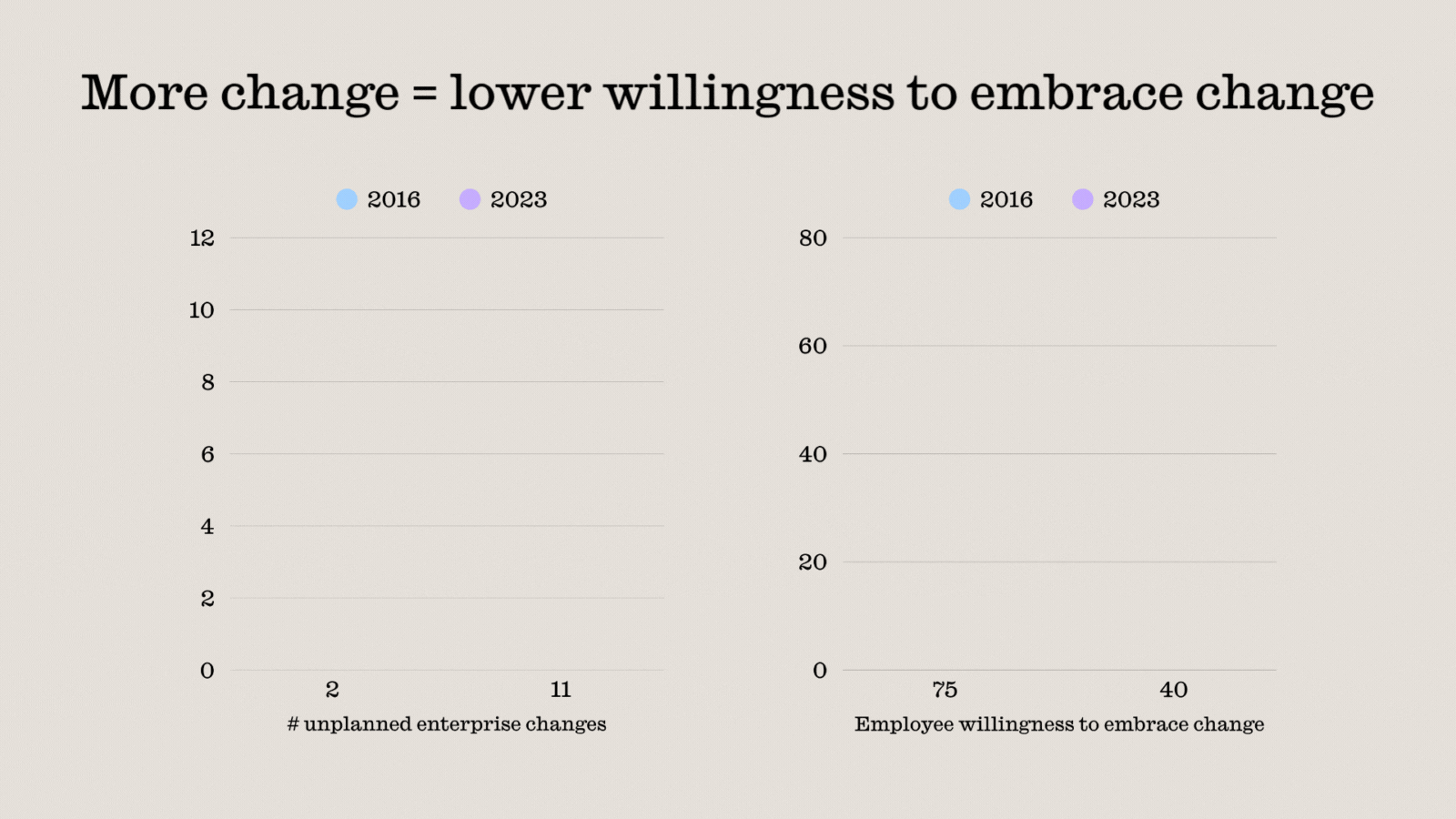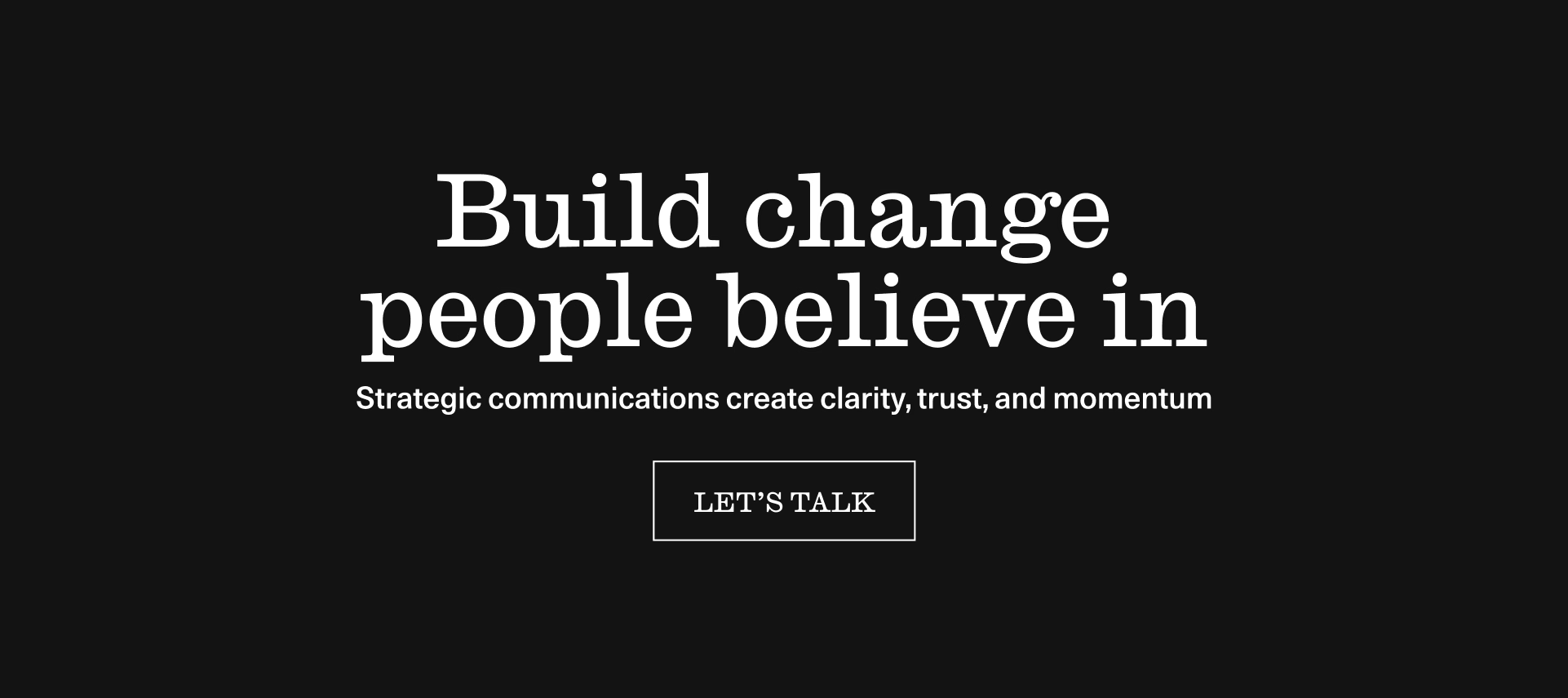
Embrace belonging communications in a world of never-ending change
The arrival of ChatGPT fast-tracked AI into strategic business conversations. Against a backdrop of rising costs and heightened competition, leaders started looking to automation to drive the next wave of growth.
A clear message quickly filtered through organisations: AI is now our key growth engine. But shortly after growth agendas were aligned to this impressive technology, Gartner made a prediction. AI was entering the “trough of disillusionment.”
Sure, it was delivering efficiency gains here and there, but was it able to move the needle on the kind of growth CEOs wanted to see – expansion into new markets or development of new products? Not quite.
At the same time, employees were being asked to absorb more change, more often. New systems. Organisational restructures. Budget freezes. Add to that the broader macro forces: inflationary pressure, a volatile job market and geopolitical instability, and it's clear why change fatigue was on the rise. And, as Gartner also found, the more change employees experience, the less change they’re willing to embrace.
In other words: when leaders needed innovation from their people, many were met with apathy, and understandably so.

Belonging comms as an antidote to organisational apathy
The conditions that lead to this apathy are still in play. Cost-of-living challenges continue to outstrip wages. Flexible work remains a point of debate. And trust in leadership is increasingly fragile, making it harder for organisations to mobilise their people around change.
That’s where belonging communications come in.
Where traditional, business-centric communications tend to focus on telling employees what they must do – often in the context of compliance, performance or policy – belonging communications places the stakeholder (in this example, employees) at the centre of the message.
They don’t just instruct. They invite. They help employees understand why change is happening and how their contributions move the business forward.
Compare this:
- Traditional: “Completion of this training is required by Friday. Failure to complete it may impact your performance review.”
- Belonging-led: “We’re rolling out a new way of working in the coming months. Do you want to be one of the first to try it and share your feedback?”
One assumes resistance. The other sparks curiosity.
Belonging comms isn't about handing over the reins. It's about creating buy-in by fostering psychological safety and giving employees a sense of shared ownership.
.avif)
The power of authentic, jargon-free messaging
For belonging comms to land, authenticity is non-negotiable. Start with dropping the jargon.
Employees shouldn't have to decode your messaging. If they find themselves rolling their eyes at another layer of business-speak, you've lost them. One of the quickest ways to undermine trust is to communicate in a way that feels insincere or patronising. Employees can spot inauthenticity a mile away, so speak plainly, and speak in their language.
Instead of:
- “We’re restructuring our business units to improve efficiency and respond to external market conditions.”
Try:
- “We’re making some changes to create clearer career pathways for you and to reduce workload bottlenecks.”
And if the message is difficult? Say that, too. Clarity and compassion can coexist. Employees can handle honesty. In fact, they respect it.
I’m reminded of an employer branding expert I once interviewed. When I asked what makes a job ad stand out, he said: “I always add a line that reads: ‘Here’s why you might not like working here,’” and then listed the unique or challenging aspects of the role.
That level of transparency is rare in business communications, but it’s a hallmark of belonging communications. It builds credibility, fosters trust and sets your organisation apart.
What's in it for us?
Too often, change comms stop short of answering the one question employees care most about: what does this mean for me?
Let’s say you’re announcing a restructure. Most leaders cover the what and the why:
- What: “We’re restructuring teams to improve efficiency.”
- Why: “This means clearer roles and career pathways, with less duplication of work.”
But here’s the missing link:
- So what?: “You’ll have more time for meaningful work and fewer frustrations navigating unclear processes.”
The “so what?” may seem obvious to you, but your people need to hear it – maybe more than once and from different people.
Anchor your message in what’s not changing
In times of change, a little certainty goes a long way.
Consider how you can bake stability into your language. Highlighting what isn’t changing is just as important as updating employees on what is. Reminding people of these stability points acts like a buoy in choppy waters – it's something they can anchor to.
When stability is paired with messaging that is authentic, transparent and inclusive, it provides reassurance, builds trust and helps employees feel like you’re all working towards the same goals.
